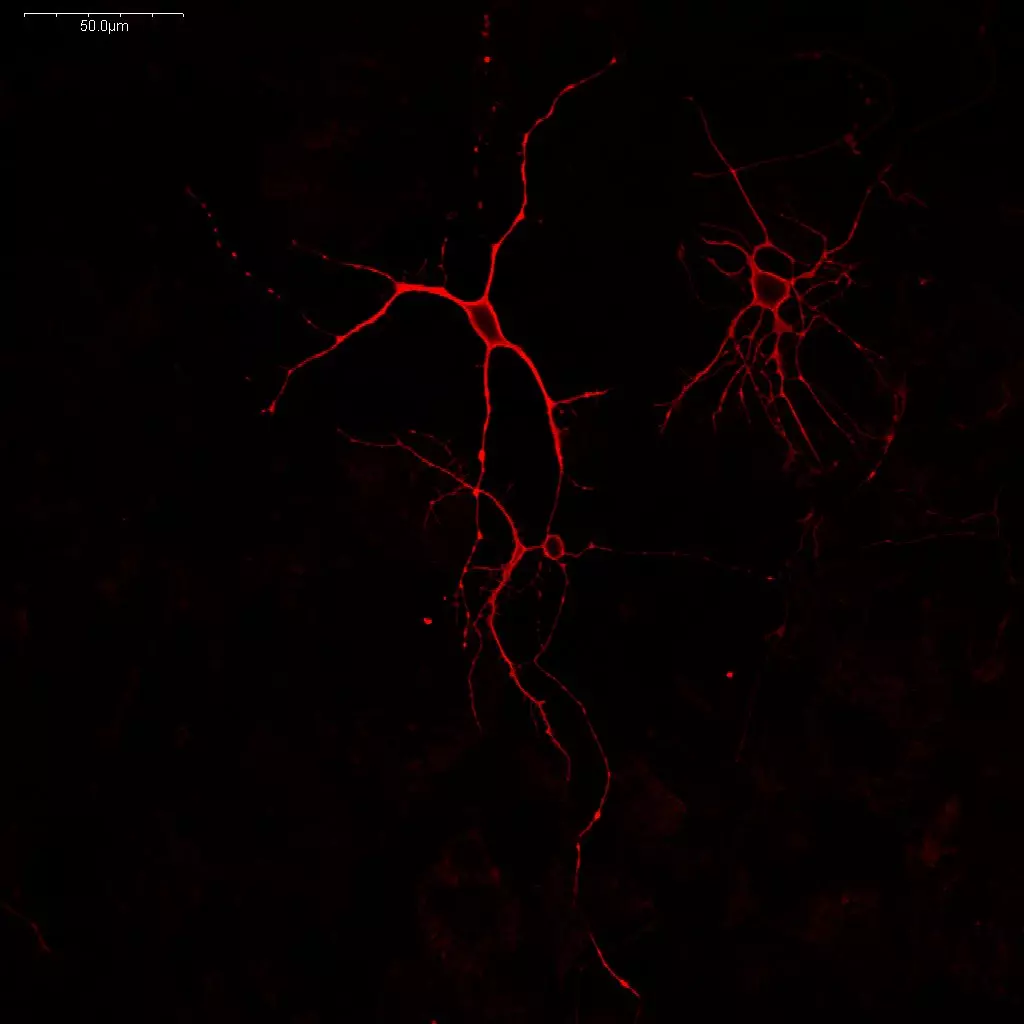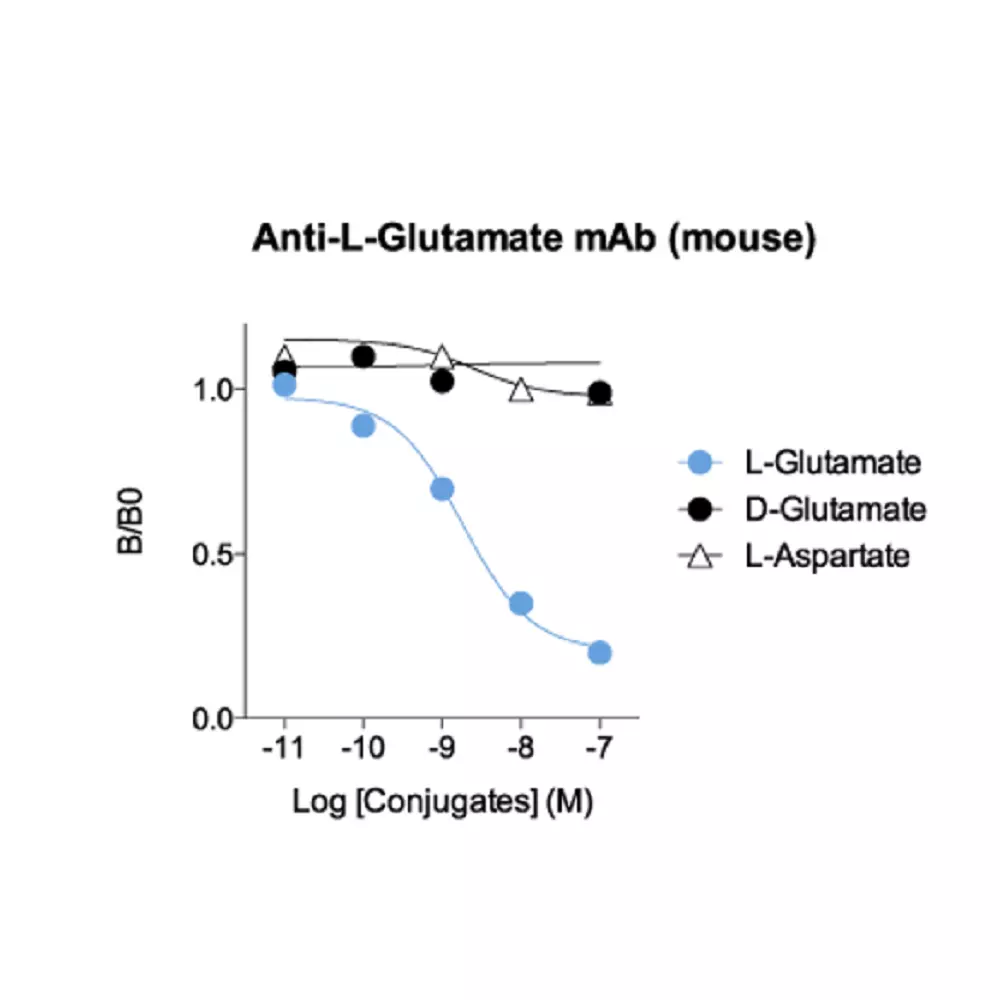L-Glutamate Antibody – Mouse Monoclonal
Ref: IS018 +
+Staining of glutamatergic neurons in mouse primary cortical culture
Our optimized mouse monoclonal anti-L-Glutamate antibody allows the detection of L-Glutamate within primary neurons in cell culture. Staining was performed using STAINperfect immunostaining kit A, according to the protocol optimized for cell culture. After addition of a fluorescent labeled
DatasheetMSDS
Anti-L-Glutamate antibody IS018 is a mouse monoclonal Ab specifically selected by competitive ELISA for its affinity and specificity features. Using with the STAINperfect immunostaining kit A, our antibody directly labels L-Glutamate in whole mounts, cell culture and tissue sections.
| Clonality | Monoclonal antibody |
| Host | Mouse |
| Applications | IHC / IF |
| Reactivity | Reacts with all species |
| Tested samples | whole mounts, cell culture, tissue sections |
| Staining procedure | STAINperfect immunostaining kit A |
| Format | 50 µL |
| References | Cited 1 paper |
Product overview
| Product name | L-Glutamate antibody – mouse mAb |
| Synonyms | Anti-L-Glutamic acid antibody |
| Immunogen | Conjugated L-Glutamate |
| Specificity | When tested in competitive ELISA, the anti-conjugated Glutamate antibody did not show any significant cross reactivity with its analogs, including D-Glutamate |
| Clone | 1D51B1 |
| Volume | 50 µL |
| Lot number | 140313 |
| Expiration date | 2025-03-01 |
Storage
| Form | Liquid |
| Purity | Purified IgG |
| Storage | Store at +4°C for short term (1-2 months). Aliquot and store at -20°C for long term. Avoid repeated freeze / thaw cycles |
| Material safety datasheet | Download MSDS |
| IF – Cell cultures, Whole mounts, Tissue sections | Dilute antibody with the antibody diluent provided in the STAINperfect immunostaining kit A. Use at 1/250 -1/1000 dilution. Follow the STAINperfect protocol suited to your sample |
| Comments | Optimal working dilutions must be determined by the end-user |
| Restrictions | For research use only |
| Full protocol | Download STAINperfect protocol for L-Glutamate staining |
| Protocols-at-a-glance |
 |
 |
 |
 |
| Complete Instructions for Use |
Protocol-at-a-glance for cell cultures |
Protocol-at-a-glance for whole mounts |
Protocol-at-a-glance for tissue sections |
Product citations
- Impact of Sleep-Wake-Associated Neuromodulators and Repetitive Low-Frequency Stimulation on Human iPSC-Derived Neurons
Check the article
Authors : Yokoi et al., Frontiers in neuroscience
2019-05









